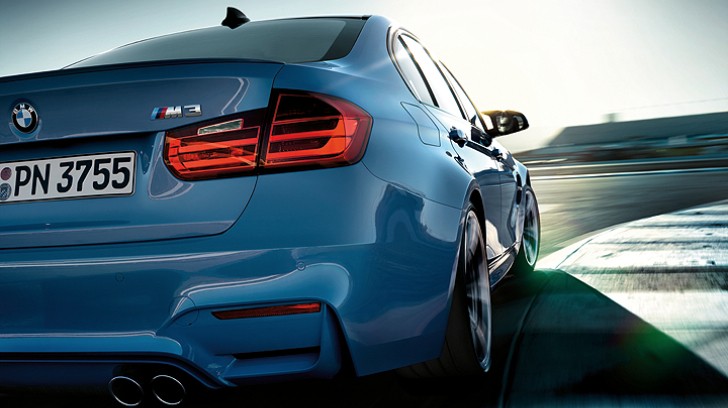BMW knew that it would be facing strong headwinds when they decided to go for a turbocharged setup in the new M3 and M4. Right from the start, they knew that everything had to be done nearly from scratch but that didn’t stop them.
Apart from the engine, intelligent lightweight construction, brakes, exhaust and power steering, the chassis had to be up to the task as well. Therefore a lot of thought and work went solely into making it capable of withstanding all situations, from hardcore race track driving to daily drives.
To explain exactly how this was achieved, BMW got M engineer, Bernd Barbisch to talk about it in an exclusive interview published on the dedicated page of BMW M.
Of course, Mr Barbisch goes into extensive details over there but a few key things caught our attention especially. First of all, the base used for these new cars was not the E90/E92 platform. These new models are not upgrades of their predecessors but were actually developed with the E46 M3 CSL in mind.
That car is still regarded as one of the best M3 models ever to be made, even though it was built in limited numbers. Its focus on less weight while keeping the engine’s output almost unchanged was key to make it a legend.
The CSL used a variety of lightweight technologies but they also had to be implemented in a smart way, to make the biggest difference. The 50:50 weight distribution, for example, was paramount and so was keeping the center of gravity low.
The dampers were developed especially for this car that also had special brakes, the roof was made of CFRP and saved around 7 kg of weight, not much but, at the same time, the new roof kept the structural rigidity of the car intact. You can see the similarities all over the new models.
Another key aspect is that the standard suspension setup could be good enough for most drivers, rendering the M Adaptive one obsolete. It all depends on how you’re going to use the car.
According to the man behind it, the standard suspension is “somewhere between SPORT and SPORT PLUS, in terms of comfort it is more equivalent to SPORT PLUS.” Therefore, it will crush your back compared to the adaptive one (that has a comfort mode) but it will be enough for the race track.
The Adaptive M Suspension’s dampers are adjusted once every 2.5 milliseconds. Using a myriad of sensors spread across the car, the dampers will be adjusted and their optimum level of damping force will be considerably different between the four wheels, making sure you have the best grip at all times.
That means that even in Comfort mode, if need be, the car will react with the outmost precision, stiffening up the dampers up to even Sport Plus mode levels, without you having to pick one mode or another. That makes driving the M3 and M4 an absolutely great experience.
Now, there are plenty more technical details available in the full interview so, if you want to know even more, check out the press release below.
To explain exactly how this was achieved, BMW got M engineer, Bernd Barbisch to talk about it in an exclusive interview published on the dedicated page of BMW M.
Of course, Mr Barbisch goes into extensive details over there but a few key things caught our attention especially. First of all, the base used for these new cars was not the E90/E92 platform. These new models are not upgrades of their predecessors but were actually developed with the E46 M3 CSL in mind.
That car is still regarded as one of the best M3 models ever to be made, even though it was built in limited numbers. Its focus on less weight while keeping the engine’s output almost unchanged was key to make it a legend.
The CSL used a variety of lightweight technologies but they also had to be implemented in a smart way, to make the biggest difference. The 50:50 weight distribution, for example, was paramount and so was keeping the center of gravity low.
The dampers were developed especially for this car that also had special brakes, the roof was made of CFRP and saved around 7 kg of weight, not much but, at the same time, the new roof kept the structural rigidity of the car intact. You can see the similarities all over the new models.
Another key aspect is that the standard suspension setup could be good enough for most drivers, rendering the M Adaptive one obsolete. It all depends on how you’re going to use the car.
According to the man behind it, the standard suspension is “somewhere between SPORT and SPORT PLUS, in terms of comfort it is more equivalent to SPORT PLUS.” Therefore, it will crush your back compared to the adaptive one (that has a comfort mode) but it will be enough for the race track.
The Adaptive M Suspension’s dampers are adjusted once every 2.5 milliseconds. Using a myriad of sensors spread across the car, the dampers will be adjusted and their optimum level of damping force will be considerably different between the four wheels, making sure you have the best grip at all times.
That means that even in Comfort mode, if need be, the car will react with the outmost precision, stiffening up the dampers up to even Sport Plus mode levels, without you having to pick one mode or another. That makes driving the M3 and M4 an absolutely great experience.
Now, there are plenty more technical details available in the full interview so, if you want to know even more, check out the press release below.
